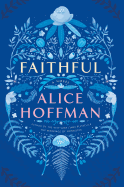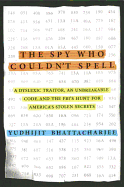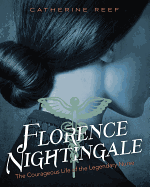|
Shelf Awareness presents Shelf Awareness | Week of Friday, November 11, 2016
|
 | Publisher: | | Simon & Schuster |
| Genre: | | Contemporary Women, Magical Realism, Literary, Fiction
|
| ISBN: | | 9781476799209 |
| Pub Date: | | November 2016 |
| Price: | | $26 |
| Faithful
by Alice Hoffman
Since the night of the car accident that left her best friend Helene in a coma, Shelby Richmond doesn't believe she deserves to live. Though her physical injuries are minor, Shelby drifts through her days in a state of agonized, drug-addled limbo, paralyzed by the events of that night, feeling both unworthy and unable to start living a life beyond the accident. Alice Hoffman ( The Marriage of Opposites) unfolds the slow, rich, heartbreaking story of how Shelby finds her way in Faithful, her 26th novel for adults.
Shelby hides out in her parents' basement, emerging occasionally to meet a high school acquaintance turned drug dealer. Ben, an amateur philosopher, becomes Shelby's boyfriend and her ticket out of their hometown; when the two move to Manhattan together, Shelby begins working at a pet store and, to her surprise, finds herself truly caring for the animals she tends. Visits from Shelby's stalwart mother, the no-nonsense friendship offered by Shelby's coworker Maravelle and her children, and postcards from a mysterious "angel" who witnessed Shelby's accident also help to tug her forward.
Back at home, there are rumors that Helene, lying still in her hospital bed, has acquired mystical healing powers. People travel from miles away to beg for Helene's help, but Shelby knows her friend can't offer the one thing she craves: absolution. Bittersweet and luminous, Hoffman's novel is a testament to the quiet power of small gestures and gradual redemption. Hoffman's characters may struggle to believe in themselves, but they find strength--and give it--in their refusal to give up on each other. -- Katie Noah Gibson, blogger at Cakes, Tea and Dreams |
 | Publisher: | | Other Press |
| Genre: | | Psychological, Contemporary Women, Literary, Fiction
|
| ISBN: | | 9781590518113 |
| Pub Date: | | October 2016 |
| Price: | | $18.95 |
| Agnes
by Peter Stamm, trans. by Michael Hofmann
A former accountant, Swiss novelist Peter Stamm ( All Days Are Night; Unformed Landscape) writes with the economy of a clean balance sheet--or perhaps with the declarative reticence of Hemingway, whose A Farewell to Arms makes a minor appearance in Stamm's short 1998 novel, Agnes, available in the United States for the first time. With his spoiler-alert opening sentences, "Agnes is dead. Killed by a story," Stamm establishes his crisp, no-nonsense style. A laconic, self-centered Swiss writer, the narrator lives alone in an unadorned Chicago high-rise and spends his days in the library. In its reading room, he meets Agnes, a Ph.D. candidate in physics and cello player in a chamber group. They share a cigarette, coffee and conversation on the library's steps and, after a few dinners out, become lovers. Impulsively, she asks him to write a story about her: "It would be like having my portrait painted."
He describes his attraction with detachment: "I couldn't claim it was love at first sight, but she interested me and took up my thoughts." Gradually his story of their relationship moves from the past to a prediction of the future. When Agnes becomes pregnant, they argue about abortion and then separate. After her spontaneous miscarriage, they reunite. Agnes wants to know where their relationship will go--how the story will end. He shares his trouble crafting it: "Endings are always difficult.... Life doesn't go in for endings, it goes on." But then, as we know from the first sentence, it doesn't for Agnes. Stamm's spare parable of love, literature, freedom and loss is a bittersweet story of the power of story. -- Bruce Jacobs, founding partner, Watermark Books & Cafe, Wichita, Kan. |
 | Publisher: | | Knopf |
| Genre: | | Psychological, Cultural Heritage, Literary, Fiction
|
| ISBN: | | 9781101946084 |
| Pub Date: | | November 2016 |
| Price: | | $27.95 |
| Thus Bad Begins
by Javier Marías, trans. by Margaret Jull Costa
Javier Marías takes his novel's title, Thus Bad Begins, from Hamlet's words to his mother ("Thus bad begins and worse remains behind"), setting the story in Madrid in 1980, when Spain hovered on the verge of legalizing divorce.
Eduardo Muriel--a Spanish film director approaching his 50s, with an Errol Flynn moustache and an eye patch--needs a young personal assistant like 23-year-old Juan de Vere to keep him on his frenetic shooting schedule, which he traditionally dictates while lying supine on the floor. One day Muriel asks Juan what he would do if a lifelong friend were not as he had always believed him to be.
This question launches a plot involving spying, lying, trickery, manipulation, eavesdropping and secret motives that stretch back to the unspeakable crimes of the Spanish Civil War. The mystery surrounds a confounding scene of marital degradation that Juan secretly witnesses--one of sheer malice that Muriel inflicts on his adoring wife, Beatriz.
Marías embeds bristling humor and a wealth of parenthetical insights and wise observations within page-long sentences and extended paragraphs. He playfully manipulates these into a tantalizing plot, one that often slides laterally as it inches toward the next incident, every word or action considered in detail. Out of dozens of subplots that Marías teases, the ones that actually fuel the novel are well chosen and gripping. The secret behind the Muriels' miserable marriage is suitably horrific, and the 445-page novel's conclusion is graceful, fair and hugely satisfying. --Nick DiMartino, Nick's Picks, University Book Store, Seattle, Wash.
|
 | Publisher: | | Graywolf Press |
| Genre: | | Literary, Fiction
|
| ISBN: | | 9781555977573 |
| Pub Date: | | November 2016 |
| Price: | | $14 |
| Cabo de Gata
by Eugen Ruge, trans. by Anthea Bell
In this slim, unassuming novel, Eugen Ruge (In Times of Fading Light) experiments with form and style, setting a plot of quietly tortured self-exploration in an austere Spanish village. Cabo de Gata is almost minimalist in its events, but expert detail fills out a story larger than its circumstances. In Anthea Bell's translation from the German, the unnamed narrator's voice suits him perfectly.
In Berlin in the years just after the Wall came down, Ruge's narrator feels stuck. He has a good-enough if meaningless job; his ex-girlfriend calls only to ask him to help care for her daughter; he suspects the punks in the ground-floor apartment stole his bicycle. He sees the rest of his life rolling out in front of him in mind-numbing routine, doomed "like the undead" to empty repetition. And so he leaves.
Indecision about where to travel pleases rather than alarms him: he seeks the unknown, "for the sake of experiment," because he is also an aspiring novelist. He chiefly wants someplace quiet and warm, and so flees to Cabo de Gata, a town in Andalusia promised by the travel guides to offer "a breath of Africa."
The narrator tells his story from a distance, from a much later time in which he hints that he has been very successful, and he pointedly chooses not to consult notes or check his facts ("I could Google it," he writes, but he doesn't.) On the surface the odd story of a troubled man haunting a Spanish town, Cabo de Gata also poses questions about life's directions and perspectives. -- Julia Jenkins, librarian and blogger at pagesofjulia |
 | Publisher: | | Jo Fletcher Books |
| Genre: | | Mystery & Detective, Fairy Tales, Folk Tales, Legends & Mythology, Fantasy, Fiction, Historical
|
| ISBN: | | 9781681442938 |
| Pub Date: | | November 2016 |
| Price: | | $26.99 |
| The Hidden People
by Alison Littlewood
While attending the Great Exhibition of the Works of Industry of All Nations in London in 1851, Albert Mirrals meets his beautiful cousin for the first time. When she begins to sing a popular tune being played on an organ, he is struck by the splendor of her voice. Although he is obviously affected by Lizzie's innocence and purity, his father know she's uneducated and not a suitable candidate for marriage. The group hastily parts ways and Albie doesn't think much about Lizzie until 10 years later, when he hears of her murder at the hands of her husband. Determined to discover why the man committed the crime on such a pure creature, Albie travels to the small, rural town of Halfoak, where traditions run deep and the advance of the new sciences and technologies unveiled at the Great Exhibition have yet to appear.
What he discovers is a town full of myths and superstitions, where the local folks are wary of strangers and conduct their business in time-tested ways that push the boundaries of reality. When his wife unexpectedly arrives in the village to share his prolonged stay, Albie begins to question his own life and ponder whether the villagers actually know more than he first surmised.
In a slow and methodical way, Alison Littlewood ( The Cold Season) has produced a dark fantasy world where gossip, rumor and supposition have been creatively blended with the introspective musings of a man who suddenly must question everything--and everyone--around him. -- Lee E. Cart, freelance writer and book reviewer |
 | Publisher: | | Poisoned Pen Press |
| Genre: | | International Mystery & Crime, Mystery & Detective, General, Fiction
|
| ISBN: | | 9781464206436 |
| Pub Date: | | November 2016 |
| Price: | | $26.95 |
| Very Pukka Murder: The First Maharajah Mystery
by Arjun Raj Gaind
His Highness the Maharaja Sikander Singh, king of Rajpore, a small kingdom in northern India, is bored. The New Year's festivities put on by the English weren't enough to rouse Sikander, but the news that Major William Russell, in charge of the English forces in Rajpore, was found apparently poisoned on the first morning of 1909, does.
Russell, the English Resident, was a hard man, and the curious Sikander soon discovers that he was not alone in disliking him. Sikander and the Resident's servants felt the lash (sometimes quite literally) of his racism, but even the Resident's fellow Englishmen seem to have many motives to wish him dead. He thwarted ambitions, preyed on defenseless women and angered many important people.
It will take all of Sikander's cunning to solve the crime; his status as Maharaja allows him to go where other Indians are not permitted and to ask the questions that the English are too prim to pose.
Arjun Raj Gaind, an Indian comic book writer, has written a delightfully intriguing mystery as his first novel. A Very Pukka Murder captures the spirit of the British Raj--with its appalling racism and indolence--while still letting the legacy of Sikander's ancestors represent India's glorious past. Sikander knows that his penchant for crime solving isn't pukka (proper), but he can't stop himself, and the reader will cheer his indefatigable inquisitiveness on. Armchair travelers, mystery readers and history lovers are sure to enjoy this interesting twist on life in the British Empire. --Jessica Howard, blogger at Quirky Bookworm
|
 | Publisher: | | New American Library |
| Genre: | | Biography & Autobiography, True Crime, Espionage, Intelligence & Espionage, 21st Century, General, History, Modern, Political Science
|
| ISBN: | | 9781592409006 |
| Pub Date: | | November 2016 |
| Price: | | $27 |
| The Spy Who Couldn't Spell: A Dyslexic Traitor, an Unbreakable Code, and the FBI's Hunt for America's Stolen Secrets
by Yudhijit Bhattacharjee
The Spy Who Couldn't Spell is the dramatic nonfiction story of the pursuit, capture and conviction of United States spy Brian Patrick Regan. Based on his 2010 article in Wired, Yudhijit Bhattacharjee's first book is both an engaging thriller and a timely peek inside the machinations of the U.S.'s security bureaucracies. Regan was a master sergeant analyst with the semi-secret, multibillion-dollar-budgeted National Reconnaissance Office (NRO), where his high security clearance gave him access to the complete infrastructure of the U.S. satellite surveillance apparatus and to the top secret Intelink intranet database used by the country's intelligence agencies. In the late 1990s, he accumulated more than 20,000 pages of documents, CD-ROMs and videotapes with details of the entire U.S. air defense and surveillance systems, and then secreted them out of his restricted-access building in a gym bag with the intent to sell them to "Axis of Evil" countries--or whomever would pay. When a confidential informant intercepted a Regan packet on its way to the Libya consulate, FBI Special Agent Steve Carr was assigned what became the biggest case of his young career.
A longtime staff writer for Science, Bhattacharjee extensively researched court and other public documents, and conducted numerous interviews with Carr and Regan's colleagues and family. He tells a story that would make a kickass movie. Once Regan's stolen documents were recovered, Carr discovered that their potential damage to United States defense was worse than anyone imagined: "an intelligence disaster on an unparalleled scale, potentially undermining the U.S. military for decades." --Bruce Jacobs, founding partner, Watermark Books & Cafe, Wichita, Kan.
|
 | Publisher: | | Little, Brown |
| Genre: | | Iraq War (2003-2011), Psychology, Ethics & Moral Philosophy, Psychopathology, History, Post Traumatic Stress Disorder, Philosophy, Military
|
| ISBN: | | 9780316264150 |
| Pub Date: | | November 2016 |
| Price: | | $28 |
| |
Starred
|
Psychology & Self-Help |
What Have We Done: The Moral Injury of Our Longest Wars
by David Wood
David Wood was raised a Quaker, did civilian service during the Vietnam War, and became a war journalist after his first assignment to a war zone in 1977. He has been a war reporter for 30 years. In his first book, What Have We Done, Wood argues that we have failed to prepare our military troops adequately for the moral shocks and dissonance of war, not supported them during their service and neglected to care for them when they return.
"Moral injury" describes the emotional reactions that come with reflection after someone returns from war to safety. "Sorrow, remorse, grief, shame, bitterness and moral confusion--What is right?--signal moral injury, while flashbacks, loss of memory, fear, and a startle complex seem to characterize PTSD." Wood focuses on the long wars in Iraq and Afghanistan because they were our first major conflicts fought entirely with an "all-volunteer" military, which "meant that those who chose to stay home mostly remained ignorant of who served and why." Rates of mental illness, suicide and violent crime among active troops and veterans have soared during these wars.
These matters are not a problem only for our military, however. "What is the accountability of those who engineered the wars? Of the politicians who pushed for and funded the fighting year after year? Of those of us who silently accepted the rationales for war, voted for those in power, and paid our taxes? ...Perhaps we are morally injured as well and, like so many combat veterans, are reluctant to peer into that darkness." What Have We Done offers readers the chance to do so. --Sara Catterall
|
 | Publisher: | | Dey Street Books |
| Genre: | | Sports & Recreation, History
|
| ISBN: | | 9780062440075 |
| Pub Date: | | November 2016 |
| Price: | | $26.99 |
| Losing Isn't Everything: The Untold Stories and Hidden Lessons Behind the Toughest Losses in Sports History
by Curt Menefee, Michael Arkush
Host of Fox NFL Sunday Curt Menefee and co-writer Michael Arkush (Rush!) present an in-depth examination of pivotal instants in the lives of 15 athletes, coaches and managers who have been on the losing side of memorable moments in sports.
Menefee and Arkush profile a range of familiar names and incidents: Boston Red Sox pitcher Calvin Schiraldi gave up the final game of the 1986 World Series to the New York Mets. Craig Ehlo of the Cleveland Cavaliers allowed Michael Jordan of the Chicago Bulls to score the winning shot in the '89 NBA playoffs. Lou Michaels, a placekicker from the Baltimore Colts, missed a field goal that cost the team the '69 Super Bowl. Snowboarder Lindsey Jacobellis made a split-second decision at the finish line of the 2006 Winter Olympics that banished her from gold. In the fourth round of the 1991 U.S. Open, Aaron Krickstein played his heart out against veteran tennis icon Jimmy Connors, but it wasn't enough. With one strike away from winning the 2011 World Series, Ron Washington, manager of the Texas Rangers, made a fateful decision. Underdog French golfer, Jean Van de Velde choked in the home stretch of the 1990 British Open. And runner Mary Decker literally fell short at the 1984 Olympic Games.
Every riveting, heartrending profile offers a well-chronicled history into events that led up to the dramatic moment that changed everything, along with a fascinating analysis of how each affected athlete sorted through complicated emotions and moved on--or didn't--after the fact. -- Kathleen Gerard, blogger at Reading Between the Lines |
 | Publisher: | | Flatiron Books |
| Genre: | | History & Criticism, Rock, Music, Genres & Styles, General
|
| ISBN: | | 9781250071163 |
| Pub Date: | | November 2016 |
| Price: | | $35 |
| The History of Rock & Roll, Volume 1: 1920-1963
by Ed Ward
If you're a boomer who grew up with ears glued to the radio, many of the musicians, bands, songs and late-night DJs mentioned in Ed Ward's The History of Rock & Roll will be familiar. But even for the uninitiated, what makes this history so enlightening and entertaining is the background detail that musicologist, journalist and NPR rock historian Ward (Rock of Ages) brings to the party. In a colloquial, conversational voice, he recounts stories of rock's roots and branches--biographical tidbits about its musicians, tales of business shenanigans among recording labels and promoters, and deep dives into the mutations and evolution of the songs. Going back to early field slave chants, gospel and country blues, Ward picks his way through the players who gradually put these influences together into what was first called "race music" and became rhythm and blues, and ultimately rock 'n' roll--the birth of which he credits to Roy Brown's 1947 jump blues song "Good Rocking Tonight," which Elvis covered in 1954 and helped put rock 'n' roll on the commercial map.
Much of rock history has been explored in more detail, but it takes a methodical and opinionated aficionado like Ward to tell the whole story. Like a knowledgeable raconteur arguing top-10 lists with buddies around a table, he really does seem to know everything--jukebox hits, regional labels, girl groups, teen idols, TV dance shows--including rock's underbelly of payola, racism and plenty of disturbing the peace. And this is only the first volume. Stay tuned. -- Bruce Jacobs, founding partner, Watermark Books & Cafe, Wichita, Kan. |
 | Publisher: | | Enchanted Lion |
| Genre: | | Classics, Boys & Men, Imagination & Play, Juvenile Fiction, Action & Adventure
|
| ISBN: | | 9781592702046 |
| Pub Date: | | November 2016 |
| Price: | | $17.95 |
| |
Starred
|
Children's & Young Adult |
Roland
by Nelly Stéphane, illust. by André François
Nelly Stéphane (or Nelly Gensbourger) was a 1950s French novelist. André François, illustrator of Little Boy Brown and more than 60 New Yorker covers, has been called "the greatest French graphic designer of the 20th century." Together they made the picture book Roland, first published in 1958, the invigorating story of a French schoolboy who has the power to create living, breathing things with just a pencil and a word.
When Roland is banished to a classroom corner, he draws "a long tiger" on the wall and says, "Crack!" A real tiger materializes and stretches to its full length, like a parade dragon, to greet the teacher. Dismissing all the students but Roland for recess, the teacher scolds the young tiger-maker: " 'See to it that you don't say "CRACK" again.' " It gets worse. When Roland pets his friend Isabel's fur coat and says "CRACK!" the coat turns into "many little fur animals" who run away. She accuses him of theft, "So the police took Roland to prison." One of the little fur animals that Roland magicked helps the boy escape while the guard is sleeping. The surreal story becomes more and more absurd (dancing dolls, donkeys and swordfish!) and eventually circles back to tie up a few loose ends... but not at all tightly, thank goodness.
François's splendid illustrations with their expressive dots and bold brushstrokes in black, mustard and blue are as extraordinary as Roland himself. There are plenty of children's books about the power of imagination, but few as much fun--or as gorgeous--as this one. A treasure. -- Karin Snelson, children's & YA editor, Shelf Awareness |
 | Publisher: | | Clarion |
| Genre: | | Biography & Autobiography, Women, People & Places, Anatomy & Physiology, Europe, Science & Nature, History, Juvenile Nonfiction, Historical
|
| ISBN: | | 9780544535800 |
| Pub Date: | | November 2016 |
| Price: | | $18.99 |
| Florence Nightingale: The Courageous Life of the Legendary Nurse
by Catherine Reef
Florence Nightingale (1820-1910) had "a face not easily forgotten," wrote Reverend Osborne in 1854 of the determined 34-year-old British nurse in charge of Scutari's (now Istanbul's) mammoth Barrack Hospital in Turkey. It was a face "with an eye betokening great self possession," he added. Nightingale needed to be self-possessed. The Crimean War was raging, soldiers were wounded and dying, and she described the foul British army hospital where she was stationed as "the Kingdom of Hell." Nightingale became internationally famous for these years of wartime service, but "the Lady with the Lamp" (she often visited suffering soldiers at night with her Turkish candle lantern) returned to England in 1856 and for years continued her work to improve "the modern profession of nursing," wartime medical care, public health in India, the conditions of British workhouses and much more.
Educated, cultivated and curious, Nightingale was a rebel in her time. In mid-19th-century England, "a pretty, accomplished daughter of a man with means" was expected to stick around the house, obeying either father or husband. At the heart of seasoned biographer Catherine Reef's Florence Nightingale is the story of a girl, then woman, caught between her ambitions and her family's expectations, who fought her whole life to do something that mattered... and excelled at it. Abundant color and black-and-white illustrations--including 19th-century cartoons, family portraits, paintings, sketches and photographs--illuminate Nightingale's family life in Victorian England as well as her travels to Italy, Egypt, Greece, Turkey and beyond.
Florence Nightingale's name has become synonymous with "caring nurse" around the world and this cleanly designed, vividly spun, meticulously researched and sourced biography shows readers why. -- Karin Snelson, children's & YA editor, Shelf Awareness |
 | Publisher: | | Razorbill |
| Genre: | | YOUNG ADULT FICTION, Death & Dying, Romance, General, Social Themes
|
| ISBN: | | 9781101998939 |
| Pub Date: | | November 2016 |
| Price: | | $17.99 |
| You in Five Acts
by Una LaMarche
Set in Janus Academy, a prestigious Manhattan performing arts school, You in Five Acts follows five seniors--friends with one semester left to secure futures in competitive fields. LaMarche frames the novel in acts, each narrated by one of the five. The countdown to graduation begins January 6, but tension is set in the "Overture" with Diego confessing, "I swore I'd never let you down. I didn't know then it was a lie." Each of the friends directs his or her story to another: ballerina Joy to her longtime friend Diego, a "straight-boy ballet dancer"; privileged, beautiful but frenetic actress Liv to Dave, a charismatic new transfer from Los Angeles with acting cred; Ethan, a playwright from Staten Island who feels geographically excluded from the Manhattan crowd and harbors an unrequited love for Liv; Dave to Liv; and Diego to Joy. Their well-meaning parents provide support, and always lurking is Diego's cousin and antithesis, Dante, who deals drugs.
Friendships, romance and pressures overlap, as the final performances approach. As Liv's drug use escalates, her choices affect the quintet and foreshadow the novel's end. The fifth and closing act is also Diego's, dated May 13, and its culmination envelops readers within the angst, passion and vulnerability of young adults with lofty goals and complex emotions. -- Cheryl Krocker McKeon, manager, Book Passage, San Francisco
|
|
» http://www.shelf-awareness.com/sar-issue.html?issue=557
|












